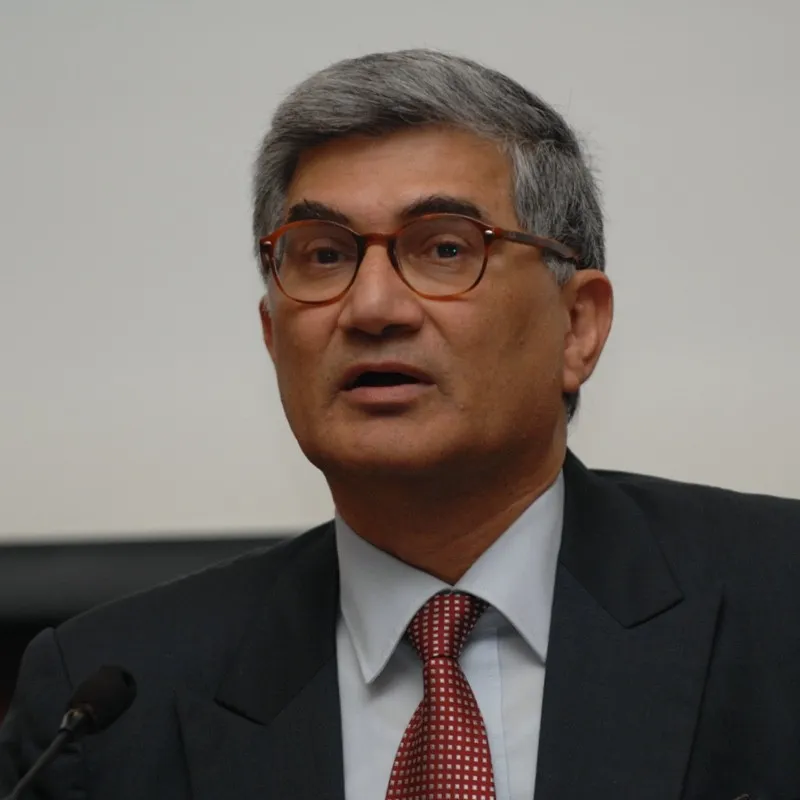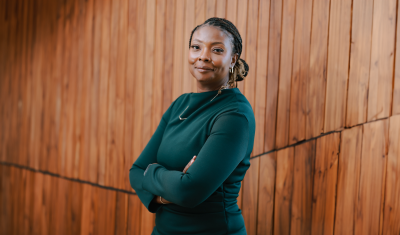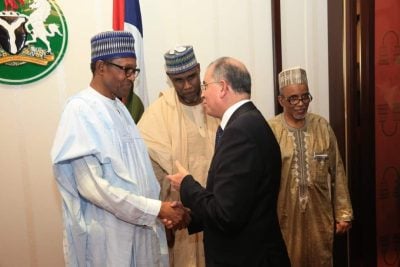
At the Africa Climate Summit in Nairobi, campaigners spoke of the desperate need to get funding to people who are already being affected by climate change. Africa, the region most impacted by the climate emergency, receives only 3% of global climate finance.
Without investment of roughly £80m a year until 2035, the continent could lose out on as much as £4.8trn of economic benefits within the next decade, according to research by the Global Center on Adaptation (GCA).
Hosting the climate summit, Kenya’s President William Ruto appeared to dismiss the pledge of $100bn mitigation and adaptation funding from developed countries as just another promise made by the rich nations to the developing world that is unlikely to be kept.
Instead, African leaders are looking at calling for global carbon taxes and financial reform to free up additional climate funding, and pushing for debt relief for African countries. Many nations, hit hard by the pandemic and the global rise of food and energy prices, have been struggling to balance development needs such as education and health against climate action.
“No country should be forced to choose between eradicating poverty, building climate resilience and honouring its debts, but right now that is what is happening,” said the former UN Secretary-General Ban Ki-moon, now chair of the GCA.
But despite the bold measures in the Nairobi Climate Declaration adopted after the summit, there is no getting away from hard figures.
Africa needs an estimated $579.2bn (£460bn) in adaptation finance over 2020–2030, but current adaptation flows to the continent are five to 10 times below those estimated needs.
We need to invert the discourse and make the case that the costs of inaction are far higher, and with far fewer returns, than the costs of investment.
According to the Intergovernmental Panel on Climate Change, with no improvements to vulnerability or adaptation, high emissions could see sub-Saharan Africa lose 12% of GDP by 2050 and 80% by 2100.
“There can be no ‘global green growth’ agenda without strong and sustained support for climate adaptation in Africa,” wrote Graça Machel in the UK’s Guardian newspaper. “This must include at least 50% of climate finance going to adaptation, with all rich countries meeting their COP26 commitment to double climate adaptation finance by 2025.” Ms Machel, who was married to Nelson Mandela, is co-founder and deputy chair of the Elders.
Attention now shifts to COP28, which convenes in Dubai in the UAE from 30 November-12 December 2023. What is in store for the rising continent’s climate action ambitions and challenges?
COP, which stands for Conference of the Parties, is the annual jamboree where UN member states convene to assess progress in dealing with climate change, especially containing global warming to 1.5°C through the holy grail of Net Zero emissions of greenhouse gases by 2050 as demanded by the 2015 Paris Climate Agreement.
In addition, they deliberate on plans for climate action through adaptation, mitigation, energy transition and finance within the guidelines of the UN Framework Convention on Climate Change (UNFCCC).
A very different world
It is a far cry from the first COP held in Berlin in 1995 when the developed nations held sway in terms of deciding and setting the agenda. In just under three decades, the world is a totally different proposition in terms of economic power, financial clout, GDP growth metrics and new market and investment opportunities.
China and India are economic powerhouses, with the latter overtaking the UK in August as the fifth largest economy in the world. The latest data from the SWF Institute shows that China, Abu Dhabi and Saudi Arabia have the world’s largest pool of sovereign assets under management, totalling over $5trn.
Climate politics and finance is as fragmented and disjointed as the COP process, which makes a consensus approach difficult. Definitions change or are revised on a regular basis depending on the latest evidence-based research.
Pledges by the rich nations to fund climate action, especially in emerging countries, dissipate on the back of political self-interest, ideological differences, geopolitical tensions and worsening economic conditions.
African nations have long maintained that the climate debate is skewed and ought to recognise the principle that countries should contribute to climate finance proportionate to their contributions to historic Greenhouse Gases (GHG) emissions, and the focus of climate action should be on countries that significantly contribute to emissions.
At COP27, one of the few successes was the agreement to establish a climate-related loss and damage fund for vulnerable countries.
Africa, notwithstanding Egypt, Nigeria and South Africa’s position as the three largest emitters on the continent, has one of the lowest carbon footprints, and yet it is also one of the most severely affected by the disruptions caused by catastrophic climate and environmental events such as floods, droughts and pests, and their impacts on the energy, food security, and infrastructure sectors, and health systems.
Egyptian Dr Mahmoud Mohieldin, UN Climate Change High-Level Champion for COP27, was adamant that that event, held in Egypt, would be “where words are turned into action”, and “guided by a holistic approach to sustainable development, based upon the principle of equity and informed by science.” The reality is that Sharm el-Sheikh turned out to be a largely procedural exercise.
Fast-forward a year, the rhetoric is not that different, but Dr Mohieldin will lead a stock-take at Dubai’s COP28 of what was achieved since COP27.
However, his successor, COP28 President-designate and UAE’s Special Envoy for Climate Change, Dr Sultan Ahmed Al Jaber, appears to have sleepwalked into a PR nightmare.
His previous day job was as CEO of ADNOC, the Abu Dhabi National Oil Company, making him the first CEO to hold the post and raising the vexed question of why has the erstwhile head of a fossil fuel giant been asked to chair a global climate change conference?
With world leaders, dignitaries, celebrities and the cornucopia of attendees clocking up the carbon miles just getting to COP28, the integrity of its very processes is at stake. The danger is that of greenwashing the form, substance and integrity of COP28.
The UAE’s mantra for COP28 is ‘Solutions and Inclusive COP’. Whether Dubai will succeed where Sharm el-Sheikh failed, only time will tell.
Dr Al Jaber moved fast in September to emphasise inclusivity, pledging $4.5bn in a financial initiative to accelerate clean-energy projects in Africa. The initiative will be funded by Abu Dhabi’s clean-energy company Masdar, the Abu Dhabi Fund for Development, Etihad Credit Insurance and the Dubai-based renewable energy company, AMEA Power. Africa50, an investment platform established by African governments and the AfDB, has also joined the initiative.
The burden of risk-premium
The major structural issues to which Africa’s climate finance ecosystem is captive are cost of capital and country risk perception.
According to the International Energy Agency (IEA), the cost of capital for utility-scale energy projects in Africa is two to three times higher than in advanced economies and is often higher for smaller projects that have fewer capital providers available.
This can act as a major barrier to scaling up investment. This is tantamount to paying a risk premium which simply multiplies the climate finance burden of sub-Saharan Africa.
Despite a surfeit of compelling stories of development impact and delivery, Africa does suffer from adverse perceptions, largely in the West, about country credit and governance risks, which are often biased, exaggerated, overstated and overvalued.
Oulimata Sarr, Minister of Economy, Planning and Cooperation of Senegal, in a recent interview stressed the importance of credit and investment insurance in project risk mitigation, but with a vital caveat.
“These products make it possible to ensure projects are more bankable with foreign investors who have a high-risk perception when it comes to investing in Africa or in developing countries.
“However, despite their vital importance in project financing, insurance often contributes to the increase in the cost of a project, especially in Africa where we suffer from an unfavourable and biased credit rating.
“The pricing of insurance premiums is partly based on a country’s credit rating and as rating agencies overstate risk on the continent, African countries find themselves paying very high premiums,” she lamented.
Nevertheless, the Financing Clean Energy in Africa Report published in September 2023 by the International Energy Agency (IEA) in collaboration with the AfDB, adopts an optimistic Sustainable Africa Scenario (SAS). It “sees the continent achieve by 2030, in full and on time, all of its energy and climate-related goals, including universal energy access and its Nationally Determined Contributions (NDCs).”
Realising the SAS, says the report, “requires mobilising $200bn annually by 2030, but energy investment has been declining in Africa and in 2022 was under $90bn. Clean energy spending was a fraction of this at around $25bn – only 2% of the global total despite the recent rise in global clean energy investment.
“Resolving this disconnect requires effort on both demand and supply, with African governments, donors, development finance institutions and private companies all playing a role. Increasing the availability of affordable capital can be a key lever to trigger a series of reinforcing positive outcomes, including driving the development of more bankable projects.”
Not surprisingly, Senegal’s Oulimata Sarr has appealed to credit enhancement and risk mitigation institutions “to help change this perception of overvalued risks by international rating agencies on Africa” and are engaging with insurers “for a reduction in insurance premiums. Lower insurance premiums would help reduce project costs on the continent and make the market more accessible to African private sector investors.”
These include the Multilateral Investment Guarantee Agency (MIGA), the political risk insurer of the World Bank Group; African Risk Capacity Group (ARC), a specialised agency of the AU; ICIEC, the multilateral insurer of the Islamic Development Bank, which has 27 African members; Africa Co-Guarantee Platform (CGP); and state and private credit insurers.
The AfDB is in fact mobilising $1bn to develop climate insurance solutions through a network of 150 insurers and reinsurers through its climate risk insurance facility, the African Risk Capacity (ARC) Group.
The facility will support the design and scaling up of insurance products for climate-related disasters. The Bank will also extend credit insurance to investment portfolios across climate, agri-food systems, and enterprise development.
The ARC’s mission is to use modern finance mechanisms, such as risk pooling and risk transfer, to create pan-African climate response systems that enable African countries to mitigate impacts of natural disasters. In June, it launched the first flood risk insurance product in Africa. It has already provided $720m in climate insurance coverage for 72m people since 2014.
Innovative financing solutions
Innovative financing solutions will help African countries recover from climate disasters, build resilience to future shocks, and complete the transition to cleaner energy.
However, the IMF’s First Deputy Managing Director Gita Gopinath, speaking in South Africa said: “To ensure fiscal sustainability, it will be critical not to rely mostly on spending measures such as green public investment and subsidies to reach net-zero targets.
“Forthcoming research in the IMF’s Fiscal Monitor shows that such an approach would lead to a sharp rise in the debt-to-GDP ratio – over 50 percentage points by 2050 relative to current paths. Clearly, this is not feasible,” she added.
Others such as Dr Mohieldin are calling for creditors, including in the G20, to write off climate debts of low-and middle-income countries. “Cancelling debts would greatly improve their ability to respond to the damaging effects of global warming.
“MDBs need to implement Climate Resilient Debt Clauses in loan contracts for poorer countries. Moreover, debt-for-nature and debt-for climate swaps could enable recipient countries to repay their debts by investing in biodiversity protection and climate action.”
The new kids on the climate finance bloc are carbon credits and pricing, of which Kenyan President William Ruto is a strong proponent, albeit he wants greater transparency in the process.
In June 2023, the Regional Voluntary Carbon Market Company (RVCMC), owned by the Saudi sovereign wealth fund, PIF, and the Saudi Stock Exchange, Tadawul, completed a highly successful auction in Nairobi, Kenya of more than 2.2m metric tons of carbon credits in what the company claims was “the biggest-ever voluntary carbon credit auction.”
Some 75% of the carbon credits originated from countries across the Middle East, North Africa and sub-Saharan Africa, including Kenya, Uganda, Burundi, Rwanda, Morocco, Egypt and South Africa.
Want to continue reading? Subscribe today.
You've read all your free articles for this month! Subscribe now to enjoy full access to our content.
Digital Monthly
£8.00 / month
Receive full unlimited access to our articles, opinions, podcasts and more.
Digital Yearly
£70.00 / year
Our best value offer - save £26 and gain access to all of our digital content for an entire year!

 Sign in with Google
Sign in with Google 



